Master Pool Salt Levels: Achieve Perfect Balance for a Refreshing Swim
December 01th, 2024
December 01th, 2024
As summer rolls around, the allure of a crystal-clear pool becomes irresistible. Yet, achieving that perfect balance of refreshing water often requires more than just filling your pool and jumping in. One crucial component for maintaining a truly enjoyable swimming experience is understanding the right amount of salt to add to your pool. Having spent countless weekends perfecting my own backyard oasis, I can attest that the secret lies in mastering the art of pool salt calculation.
Saltwater pools have surged in popularity over the years, cherished for their silky-smooth water and lower maintenance demands. Unlike traditional chlorine pools that require regular addition of harsh chemicals, saltwater systems use a salt chlorinator to convert salt into chlorine, offering a gentler alternative. The key, however, is not just tossing in salt haphazardly but knowing exactly how much your pool needs.
Once, I vividly remember getting the mix wrong and ending up with water that felt more akin to the ocean than a serene retreat. It took some trial and error—and a bit of research—to finally hit that sweet spot. Whether you’re just starting your saltwater journey or looking to perfect your pool’s chemistry, understanding how to measure and adjust salt levels is paramount. This guide will unravel the complexities of salt calculation, ensuring your pool is always ready for a splash.

When maintaining your pool's balance, figuring out the salt requirements is a bit like fine-tuning a complex instrument. First, you'll need a precise reading of your pool's current salinity. If your water is around the 1,000 PPM mark, you’re not starting from scratch. Instead, you’ll want to edge it up to that sweet spot of 3,200 PPM. For a 10,000-gallon pool, this likely means adding around four or five 40-pound bags of salt.
Accuracy is key here. If your salt level is inaccurate, your chlorine generator won’t perform optimally. There are a few tools at your disposal to help with this. A digital salinity tester offers the most precise readings, but a simple salt test strip can work in a pinch. Once you've pinpointed your current level, it's time for a bit of math. Calculate the difference needed to reach the ideal 3,200 PPM for your specific pool size.
Let's say your reading is 1,200 PPM in a 12,000-gallon pool. You’d need about 200 pounds of salt, or five 40-pound bags, to hit the target. Always add the salt gradually, letting each dose dissolve and circulate before retesting. This cautious approach prevents overshooting the mark, which could harm pool surfaces and equipment. Just like seasoning a dish, a little goes a long way, and it's easier to add more than to subtract it.
Understanding the current salt levels in your pool is akin to checking the pulse of your pool’s health. It’s the first step to ensuring your saltwater system operates smoothly. A good starting point is your saltwater generator, which typically displays the salt concentration. Yet, these readings might sometimes lead you astray due to factors like low water temperatures or a need for recalibration. If you’ve ever had a pool party in early spring, you might recall how chilly water can affect equipment readings.
To get a reliable measure, consider using a digital salinity tester. This handy gadget provides accurate readings and can be a lifesaver during maintenance sessions. Just plunge it into the pool, and it will tell you precisely what you need to know. For those who prefer a more traditional approach or who are budget-conscious, salt test strips offer a straightforward, albeit less precise, alternative. Simply dip them into a water sample and allow a few minutes for results to develop.
If you lean towards a more hands-on method, liquid test kits are another option. By adding a reagent to a water sample, you can observe a color change indicating salt concentration. Testing regularly, perhaps as part of your monthly routine, can help you catch any imbalances early. This way, you can address issues before they escalate, ensuring your pool remains a safe and inviting oasis all season long.
Determining the right testing method for your pool's salt level is akin to picking the perfect tool for a job—it's all about effectiveness and precision. The first step is understanding the tools at your disposal. A digital salinity tester is often hailed as the gold standard. This handy gadget offers precise readings and easily tackles not just salinity, but also total dissolved solids (TDS) and water hardness. Its user-friendly nature allows you to simply dip it into your pool and receive immediate results on a clear digital display.
Then there's the budget-friendly option: salt water test strips. While not as pinpoint accurate as digital testers, they provide a reasonable estimate of salt concentration in your water. These strips are simple to use—just dip one in a water sample and wait a few minutes for the results. They cover a wide range of salt levels, making them versatile and accessible.
For those who appreciate a hands-on approach, liquid test kits offer a slightly more involved process. These require you to mix reagents with pool water, which then changes color to indicate salinity levels. Although a bit more cumbersome, they can be a reliable choice if used correctly.
Each method has its merits, so consider your pool’s needs and your personal preference when selecting a testing strategy. Regular testing ensures you remain in the sweet spot of 3,200 PPM, safeguarding your pool's health and longevity.
When it comes to adding salt to your pool, safety and precision are key. Before you reach for those bags of pool-grade salt, ensure your water chemistry is well-balanced. It's like preparing your canvas before painting; the pH and alkalinity need to set the stage for optimal salt performance. Use a reliable test kit to check these levels as well as the current salinity—this will inform how much salt your pool truly needs.
Choosing the right type of salt is equally important. Opt for pool-grade salt that boasts at least 99.8% purity. Avoid any products with anti-caking agents, as they can leave unsightly residues or damage pool surfaces over time. Once your supplies are ready, turn off your salt chlorine generator and leave the pump and filter running. This helps the salt circulate effectively without risking damage to the generator itself.
When adding the salt, disperse it evenly around the pool's shallow end. Resist the temptation to pour it into the skimmer; doing so can clog your system and lead to costly repairs. Allow the salt up to 24 hours to dissolve fully, checking periodically to ensure it’s integrating well. Once dissolved, test your salt levels again to confirm they are near the ideal 3,200 PPM. This is your cue to turn the generator back on, ensuring it can produce the right amount of chlorine to keep the water pristine.
Keep in mind that adding salt isn't a frequent chore; typically, it’s a once-a-year task unless dilution occurs from heavy rain or excessive splash-out. By following these steps, you’re not just adding salt—you’re setting the stage for a summer of worry-free swimming.
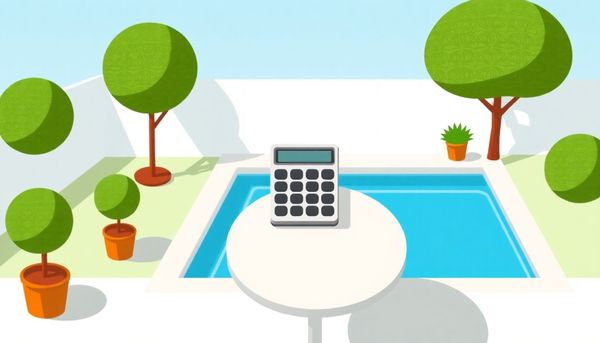
Salt levels in your pool can play hide and seek like a chameleon. They may seem just right one day and then, after a heavy rain or a pool party splash marathon, they need some tweaking. Ensuring your pool maintains a steady salinity can be a bit like maintaining the perfect balance on a tightrope. Initially, use a reliable salinity tester to get an accurate reading of your current salt levels. Trust but verify—your pool’s digital display might lie if it’s feeling uncalibrated or if the water temperature’s low. Cross-check these readings with a manual method like a digital salinity tester or test strips.
Once you're sure of the current salt levels, it's time for the chemistry wizardry. Say your pool is registering at 1,500 PPM and you need to bump it up to the ideal 3,200 PPM. Using a straightforward calculation, determine how many pounds of salt are required. For instance, in a 10,000-gallon pool, you might need four additional 40-pound bags of salt. Sprinkle the salt around the shallow end or along the pool’s edge, but steer clear of the skimmer.
Allow the pump to work its magic overnight, giving the salt ample time to dissolve. Recheck the salinity the next day. If it’s within the sweet spot of 2,700 to 3,400 PPM, you’re in the clear. Reassess periodically, especially after heavy rains or water additions, ensuring your chlorine generator isn’t overworking or underperforming, and your pool remains a shimmering oasis.
Tracking down the current salinity levels in your pool isn’t just a preliminary step—it’s your first line of defense in maintaining a healthy swimming environment. Rather than relying solely on your salt water generator's readout, which can be finicky, especially in cooler water temperatures, it's wise to occasionally verify these levels manually.
Personally, I’ve had a situation where my generator insisted my pool was a saline desert, when in fact, it was floating comfortably in the ideal range. A quick check with a digital salinity tester saved my sanity—and my pool's ecosystem. These nifty gadgets, which are as easy to wield as a thermometer, give you a precise salt reading without the guesswork. Simply submerge it in your pool, and it’ll spit out a number that tells you if your pool is ready for swimmers or if it’s in dire need of salt.
For a more budget-friendly approach, salt test strips offer a fair assessment. Though slightly less exact, they still provide a valuable snapshot of your pool's salinity. I found them particularly useful on a lazy Sunday afternoon when I wasn’t in the mood for digital devices.
Liquid test kits round out your options, perfect for those who like a hands-on approach to pool care. A little chemistry, a swirl of pool water, and you’ve got your answer. Whichever method you choose, ensuring your pool's salt levels are accurate means you're set up for a summer of smooth swimming.
Understanding the nuances of salt levels in your pool begins with selecting the right testing methods. Each season, before adding salt to your pool, verifying your current salinity is essential to avoid over- or under-treatment. When I first set up my pool, I relied heavily on my salt water generator’s display. However, I quickly learned that these readings could be skewed by factors like temperature fluctuations or the presence of other minerals, leading to incorrect adjustments and a cloudy pool.
Using a digital salinity tester is akin to having a trusted advisor on hand—reliable and precise. This gadget not only measures salt levels but often checks for total dissolved solids (TDS) and water hardness, providing a comprehensive snapshot of your water quality. When accuracy is paramount, this tool is indispensable, though it may require a bit of an upfront investment.
Alternatively, salt test strips serve as a budget-friendly option. These strips deliver a quick check by changing color to indicate sodium chloride levels, ranging from 400 to 7,000 ppm. While they don't match the precision of digital testers, they’re perfect when you need a ballpark figure in a hurry.
Liquid test kits are another viable option, offering detailed results through a chemical reaction in the water sample. Despite their accuracy, they require more steps and careful handling of reagents.
Choosing the right method isn't just about convenience—it's about ensuring your pool stays a safe, enjoyable haven throughout the year. With the right tools, you can confidently maintain optimal salt levels and extend the life of your pool equipment.
Determining the correct amount of salt for your pool is like finding the perfect balance in a recipe. Just as too little salt can make your dish bland, too little pool salt can leave your water inadequately chlorinated. Conversely, an overload can damage your pool's equipment. The goal is to maintain an ideal salinity around 3,200 parts per million (PPM).
First, consider your pool's volume. For a 10,000-gallon pool needing an increase from zero to 3,200 PPM, you'll typically require 267 pounds of salt—equivalent to around six to seven 40-pound bags. If your pool already contains some salt, you’ll need to adjust your calculations accordingly. For instance, starting at 1,200 PPM means you’ll only need about 200 pounds to hit 3,200 PPM.
To accurately assess your pool's current salinity, rely on a digital salinity tester or test strips. These tools provide a snapshot of what adjustments are necessary. It's like using a cooking thermometer to ensure your roast reaches just the right temperature.
Bear in mind, salt doesn’t evaporate; it gets diluted through rain or water addition. Therefore, regular testing is key. Once you've added the salt, allow it to circulate for about 24 hours, then test again to confirm you've reached the optimal level. Remember, maintaining this balance not only ensures a clean pool but also prolongs the life of your equipment.
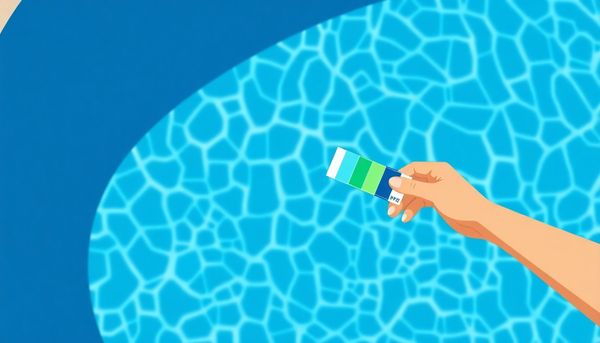
Salt in a swimming pool may sound unusual, but it's the key ingredient that keeps your pool sparkling and safe. It's akin to seasoning your favorite dish—too little, and something's off; too much, and it becomes overwhelming. Maintaining the optimal salt level, which hovers around 3,200 parts per million (PPM), ensures your chlorine generator operates efficiently, creating that much-needed chlorine to fight off bacteria and algae.
To get it right, consider your pool's salt cycle. While salt doesn’t evaporate, it can dilute with rain or additional freshwater. This explains why even after the initial dose, periodic checks are necessary. At one point, I noticed my pool water looking a bit cloudier than usual. After testing, I discovered salt levels had dropped due to recent heavy rain. With quick adjustments and a couple of 40-pound bags of pool-grade salt, my pool was back to its pristine state.
Remember, adding salt isn’t just about pouring it in and walking away. It involves balancing other factors like pH and alkalinity first. This ensures the salt doesn’t just settle at the bottom like the forgotten sugar in a cup of coffee. Once added, let the pool pump do its magic, circulating the water to evenly dissolve the salt. Always keep tabs on your pool’s salt level, aiming for that sweet spot to prolong the life of your pool equipment and safeguard its surfaces.
Testing the salt levels in your pool isn't just a matter of routine maintenance; it’s a crucial step in ensuring your pool remains a safe and enjoyable oasis. Many pool owners might rely solely on their salt water generator's digital reading, but this can sometimes be misleading. Temperature fluctuations or sensor malfunctions can skew these readings, causing you to either overestimate or underestimate the salt needed. It's like trusting a GPS with outdated maps—it can lead you astray.
For a more dependable approach, consider using a digital salinity tester. This tool offers precision, providing an immediate and accurate reading of the current salt levels. Imagine you're hosting a weekend pool party. You'd want to be certain that your pool is perfectly balanced, ensuring your guests are swimming in clean and properly chlorinated water. A digital tester confirms the exact salinity, giving you peace of mind that your settings are spot on.
Alternatively, salt test strips also provide a good approximation of your pool’s salinity. They're easy to use and more budget-friendly, suitable for those quick checks just before a weekend splash. Additionally, liquid test kits, though slightly more meticulous, offer a reliable backup. By taking these proactive steps, your salt levels will remain just right, preserving both the health of your pool and its equipment. So next time you grab a cold drink and relax by the water, you can rest assured that your pool is in perfect harmony.
Finding the perfect pool salt is like choosing the right seasoning for a dish—it can make all the difference. Not all salts are created equal, especially when it comes to maintaining a balanced and efficient saltwater pool. When selecting pool salt, purity is key. Opt for pool-grade salt that boasts at least 99.8% pure sodium chloride (NaCl). This ensures that the salt dissolves efficiently without leaving behind residues or impurities that could affect water quality.
Granulation is another vital factor. Finely granulated salts dissolve more quickly, which helps in achieving the desired salinity faster and reduces the wait time for your pool to reach optimal chlorination levels. Avoid salts with anti-caking agents, as these can lead to undesirable outcomes like staining or scaling on pool surfaces.
From personal experience, switching to a high-quality, food-grade salt improved not just the clarity of my pool but also extended the life of the chlorine generator. It's a small investment that pays off by reducing maintenance headaches and safeguarding the longevity of pool equipment.
Lastly, consider the source. Evaporated salts, often derived from seawater, are usually more consistent in composition than those mined from underground. Remember, the right salt choice not only keeps your pool sparkling but also ensures a seamless and enjoyable swimming experience all season long.
Salinity management in a pool is akin to keeping a delicate balance on a seesaw. When I first transitioned to a saltwater pool, it was a learning curve, but the key takeaway was the importance of keeping a watchful eye on salt levels. Your pool's salinity acts as the lifeblood for your chlorine generator. Too little, and it's like trying to start a car without gas; too much, and you risk costly damage to your pool's vital components.
Begin by investing in a reliable digital salinity tester. Once, when I relied solely on my pool's generator reading, it gave an inaccurate reading due to the chilly spring water. A quick check with a digital tester revealed the true salt level, saving me from unnecessary salt additions. Regular manual testing, at least monthly, complements the digital readout and ensures accuracy.
When adjusting salt levels, patience is your ally. After adding salt, it's crucial to let your pool's pump run for a full day to allow complete dissolution and even distribution. Then, test again. If the levels are close to the desired 3,200 PPM, you’re on track. However, if adjustments are still needed, add salt incrementally. In my experience, adding smaller amounts and rechecking prevents overshooting the mark, which can lead to salt levels that creep too high.
By keeping salinity in check, you not only ensure effective chlorination but also extend the lifespan of your pool equipment. This balance maintains a crystal-clear pool and a worry-free swimming season.
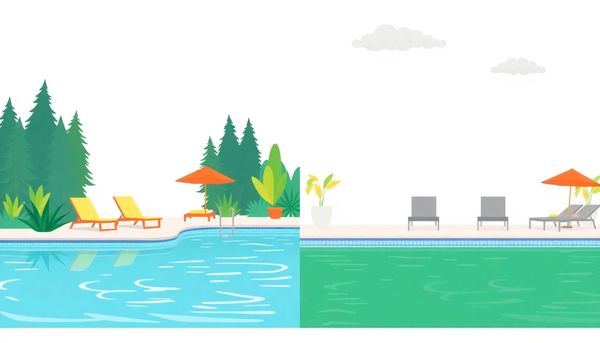
Selecting the right salt for your pool is like choosing gourmet ingredients for a recipe—it can make all the difference. When embarking on your saltwater pool journey, ensure you use pool-grade salt, which is explicitly designed for aquatic systems. This isn’t your typical table salt or the kind you sprinkle on your driveway during a snowstorm. Pool-grade salt is nearly pure sodium chloride, boasting a purity level of at least 99.8%, ensuring it won't introduce unwanted impurities into your pool.
Granulated and evaporated, this type of salt dissolves quickly, making it ideal for even distribution throughout your pool water. You might be tempted by cheaper alternatives, but opting for non-iodized salt without anti-caking agents is crucial. These additives can discolor your pool surfaces and wreak havoc on fittings. It’s a bit like buying organic produce—more about quality and long-term health than short-term savings.
Once, when I switched from a cheaper rock salt to premium pool-grade salt, the difference was immediately noticeable. The water clarity improved, and maintenance became a breeze. Plus, you avoid the drama of having your chlorine generator underperform due to impurities clogging the system. So, as you calculate how much salt to add, remember that the type you choose plays a pivotal role in maintaining a pristine and inviting pool environment. Keep your pool happy with the right salt, and it will reward you with crystal-clear waters.
Understanding your pool's current salt levels is like knowing the pulse of your saltwater system. It's the starting point for any adjustment you might need to make, ensuring a balanced and healthy swimming environment. Relying solely on your salt water generator's display might not always be wise, as these gadgets can sometimes produce misleading readings. Factors such as low water temperatures or a dirty salt sensor can throw off your generator's accuracy, leading you to either over-salt or under-salt your pool.
To get a comprehensive picture, consider using a digital salinity tester. These handy tools provide precise readings and are straightforward to use—just dip the tester into the pool water, and you’ll have your salt level in moments. Alternatively, salt test strips offer a budget-friendly option, though slightly less precise. Simply dip a strip into a small water sample and wait for the color change to indicate salinity levels. For those who enjoy the chemistry set approach, a liquid test kit can be a fun and effective way to measure your pool's salt content.
When my neighbor first converted his pool to saltwater, he found that investing in a quality digital tester saved him a lot of trial and error. His initial generator reading was off by several hundred PPM because the water was too cold, almost leading to an unnecessary salt purchase. By testing manually once a month, you'll avoid such pitfalls and maintain optimal conditions for your pool.
When it comes to ensuring your pool's health, choosing the right salt is akin to selecting the finest ingredients for a cherished recipe. Not all salts are created equal, and for pool maintenance, high-purity pool salt is paramount. The benchmark here is a purity level boasting at least 99.8% sodium chloride (NaCl). This guarantees minimal impurities that could otherwise disrupt or harm your pool ecosystem.
Years ago, I learned the importance of purity the hard way. After a hurried purchase of a generic salt, I noticed unsightly stains on my pool's surface. Those uninvited marks were thanks to additives mixed in with the salt. To avoid such pitfalls, opt for evaporated, food-grade, granulated, non-iodized salt, free from anti-caking agents. These elements can not only discolor surfaces but also impact water clarity and equipment longevity. Your pool should feel as pristine as a refreshing dip in the sea, sans the debris.
Moreover, the dissolution rate matters. Pool salt like Professional Pool Salt dissolves quickly, meaning less waiting and more swimming. Given its fast-dissolving nature, it allows rapid integration into your pool’s water, maintaining a steady salinity level without much delay. This ensures your chlorine generator runs smoothly, keeping the pool sanitized.
In essence, selecting high-purity pool salt is a simple yet crucial step in pool care. It protects your investment and enhances your swimming experience. So next time, check those labels, and your pool will thank you with sparkling, inviting waters.
Understanding the exact amount of salt your pool requires is not just a mathematical exercise—it's essential for maintaining a healthy swimming environment. Before grabbing those bags of pool salt, you'll need to assess your current salinity level. Many saltwater systems provide a digital readout, but these can sometimes be misleading, especially if your generator needs calibration or if the water temperature is lower than usual. To ensure accuracy, consider using a digital salinity tester, which offers reliable readings by directly measuring the salt concentration in your pool water.
Once you have an accurate salt level, you can calculate the additional salt needed to reach that sweet spot of about 3,200 parts per million (PPM). The math involves a straightforward formula: multiply your pool’s volume in gallons by 8.35, then multiply the result by the difference between your target salt PPM and your current level, divided by 1,000,000. For instance, if your 12,000-gallon pool currently has a salinity of 1,200 PPM, you'll need approximately 200 pounds of salt. This translates to five 40-pound bags—perfect for a quick trip to your local pool supply store.
Remember, patience is key after adding salt. Allow it to dissolve and circulate, which might take up to 24 hours. Only then should you re-engage your salt chlorinator and test the water again to confirm that you’ve achieved the optimal salt level. By maintaining these levels, your generator can function efficiently, extending its lifespan and ensuring your pool remains a clean, inviting oasis.

Ensuring your pool's salinity is accurate involves more than just trusting digital displays. To safeguard against equipment malfunction and maintain optimal chlorine production, manual verification of salt readings becomes essential. Imagine standing by the pool, dipping a test strip into the water, waiting for those crucial color changes—it's the simplest, most hands-on way to monitor salinity levels.
Consider using a digital salinity tester for precision. This handy tool, albeit pricier than strips, delivers accurate readings by directly measuring the pool water's conductivity. It’s particularly valuable on cooler days when water temperatures can skew digital sensors' readings. My friend swears by his tester, often recounting how it saved him from over-salting the pool during an unexpected cold snap.
For a more traditional approach, liquid test kits are your ally. These kits, reminiscent of high school chemistry experiments, involve adding reagents to water samples and observing color changes. Although they require a bit of patience and attention to detail—qualities you might remember from those days in class—they provide a reliable method for those who appreciate tactile processes.
Ultimately, combining these manual methods with your pool's digital system offers a comprehensive snapshot of your water's condition. This multifaceted approach ensures that when it comes time to add salt, you're doing so with confidence, preserving both your pool’s health and your peace of mind.
In the modern age of pool maintenance, digital tools have revolutionized the way we manage water chemistry. For those who have ever struggled with ambiguous readings from traditional test strips, digital salinity testers offer a breath of fresh air. These handy devices provide precise readings with just a dip into your pool water, making it effortless to monitor salt levels. With technological advancements, many digital testers also measure additional factors, such as total dissolved solids and water hardness, offering a comprehensive view of your pool’s health.
A friend once shared their experience of constantly battling with unsteady chlorine levels until investing in a digital tester. The accuracy it provided helped him maintain the perfect salt balance, ensuring his chlorine generator operated flawlessly. This transition not only saved time but also reduced the frustration of guessing and re-testing.
For those who enjoy a more tactile approach, combining digital readings with traditional methods like salt test strips can add an extra layer of assurance. While strips might lack the precision of digital tools, they’re a cost-effective way to keep an eye on salinity levels. When using them, remember to follow the instructions carefully for the best results, as this ensures you’re not misled by any potential inaccuracies.
Digital tools streamline pool care, providing peace of mind and ensuring your pool remains a sparkling oasis throughout the swimming season. So, the next time you're pondering over salt levels, let technology lend you a hand—your pool will thank you for it.
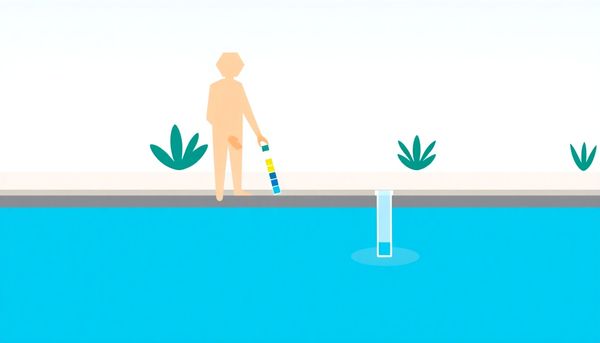
Ensuring safety when adding salt to your pool should be a top priority, as it can significantly impact the health of your pool and its equipment. Before reaching for those bags of salt, take a moment to measure the current salinity levels accurately. Using a digital salinity tester can provide precise readings, ensuring you won't risk overshooting your target range. It's a small gadget that can save you big headaches down the line.
Once you have the measurements, turn off your salt chlorine generator to prevent any interference. However, keep your pool pump running. This circulates the water, allowing the salt to dissolve evenly. Remember, dumping salt directly into the skimmer is a no-go. Instead, sprinkle it around the pool's perimeter or opt for the shallow end. This simple step helps avoid undissolved salt from settling in your pool system.
After adding the salt, patience is key. It might take up to 24 hours for the salt to fully dissolve, especially if it's a coarser variety. Once dissolved, switch your generator back on and test the water again. With the right salinity, your generator can efficiently produce chlorine, keeping your pool pristine and inviting. By following these careful steps, you'll protect your investment and ensure your pool remains a safe haven for swimming enthusiasts.
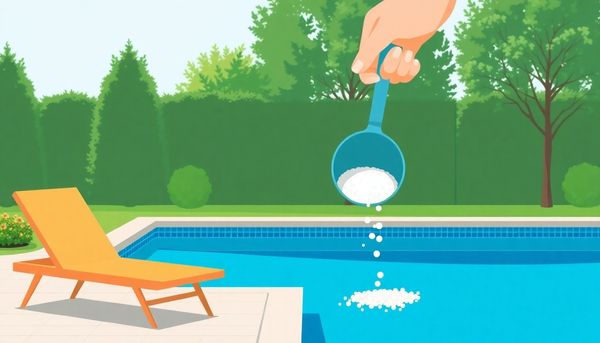
This article provided insights into maintaining your pool. Start your pool care journey today!
Want to become a pool maintenance expert? Our free Pool School course covers everything you need to know about pool care. From basic maintenance to advanced troubleshooting, you'll learn how to:
Join over 10,000 pool owners who have already transformed their pool care routine. Get started with our free Pool School course today!